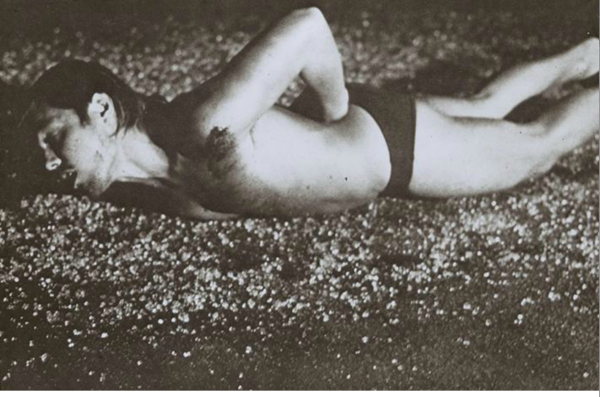In the April CCG newsletter we wrote about Michael Masucci who was speaking at the InfowarCon security conference. InfowarCon is the brainchild of author and cyber-security pioneer Winn Schwartau, who not only coined the now-ubiquitous phrase “Information Warfare” ( the title of his 1994 book, now considered a classic in the field) but founded the elite cyber-security conference InfowarCon that same year.
This year Schwartau suggested Masucci deliver a presentation applying his long experience in alternative media and DIY production, in the analysis, deconstruction, and contextualization of the vast and popularly reported video productions associated with ISIS.
What became clear to Masucci was how effective ISIS’s training videos are, and so difficult to counteract, because of their authenticity. His audience, primarily military and intelligence officers from the US and Europe, listened intently as he discussed this issue.
“In my research for the presentation, I delved into the vast catalog of on online material, ranging from what I call ‘snuff films’ to highly crafted ‘video operas’ which blend a highly-informed integration of the most effectively manipulative techniques derived from reality TV, music video, infomercials, heroic fictional narratives, agitprop documentaries and commercial advertising. Crafted together with an authenticity, which made them very potent tools, to entice those already predisposed to violence, as well as simultaneously terrifying to those predisposed to peace. To my utter astonishment, these productions, cheaply manufactured, were far more effective than the counter-productions produced by the U.S.
The authenticity I speak of is by far the most powerful psy-op tool I have seen, and I have now referred to these videos as in effect, a weapon of mass destruction.
“After watching a number of ISIS media productions, ranging from the most notorious, to the equally effective, but less publicized, I saw a film-making style which although completely derived from mainstream Western media, has become very much its own voice, articulate, visceral, almost operatic. They are unlike any other. For example, the media produced by the far-right in the U.S. such as the NRA, is more conventional, styled like news programs or infomercials. And they differ conceptually in many ways from the large-scale media productions commissioned by the U.S. military.
The approach in media propaganda, taken in the past by Western military operations, has been to hire large advertising companies to create the promotional materials, as well as Hollywood style directors to then make them. These are literally the same media companies who produce soft drink commercials and the resulting military recruitment films seem more like a soda commercial than any call to action. When I placed side- by side two competing recruitment videos, one by the U.S. Army and one by ISIS, the results were immediate. The ISIS video conveyed an authenticity, which the Army video did not. That conveyance of authenticity cannot be over-stressed. It draws the audience in, and offers comradely, a sense of moral superiority, and is informed by the most effective techniques from mainstream media: including reality TV, heroic narrative fiction, music video, fashion photography, documentary film-making, and video games.
Yet, unlike its Western counterparts, these productions do not seem contrived, calculated, or produced in a conference room, by a team of market researchers. They appear to be organic, grassroots efforts, even though they are likely not. Yet I do think they are made by ‘true-believers’, and I have no doubt that the camera operators, and post-production teams, are as capable of carrying out the horrendous acts seen in many of the videos, as are the on-camera perpetrators. “
To demonstrate his point, Masucci looked for existing models of media producers who create similarly visceral and seemingly authentic sentiments. Performance Art, especially the body art created by artists such as the late Chris Burden (still living at the time of the conference) appeared to be a good candidate. “I showed the still from Burden’s 1974 “Trans-fixed” piece, where Burden has had himself nailed to the roof of his Volkswagen. The audience was largely unaware of the piece, of even this branch of contemporary art practice. Although I suspect there would be much debate in the room as to the place in which this work belongs in the greater discussion of art history (the audience was largely as would be expected conservative), they took my suggestion very seriously and saw immediately the synergies which could be constructed between contemporary art based practice, and the psy-ops in which they were engaged.”
It remains to be seen at what point artists and creators will be drawn more directly into a war effort, as they have historically been. There are abundant examples, Leonardo DaVinci’s work for the Sforza family of Milan perhaps the most famous (notorious?). Is there a role for artists as strategists, planners, weapons designers and psy-op’s specialists? The moral conundrums that will accompany these choices is another subject entirely. If Masucci from Campbell Consultants Group is right, we may be on the cusp of that discussion.
